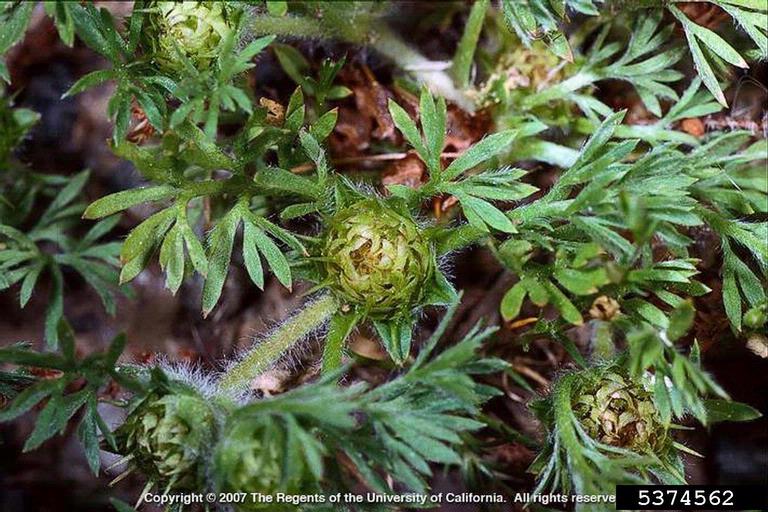
by Matthew Orwat | Oct 10, 2017
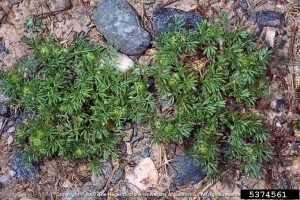
Burweed, Soliva Sessilis. – Image Credit: Joseph M. DiTomaso, University of California – Davis, Bugwood.org. Creative Commons License
On the top of my list of lawn related annoyances is stepping into a patch of burweed, Soliva sessilis, which is in the sunflower family and is also known as spurweed. The leaves are opposite along the stem and sometimes resemble parsley. The main ways in which burweed can irk the casual gardener are sticking to socks, sneaking in with the dog, or littering flower beds with its nuisance. It can also hide in the house and reappear when shoes are removed. This causes pain in both the foot and the ear.
Lawn burweed has been an especially noticeable problem in lawns. Over the years, extension offices throughout Northwest Florida have been fielding many questions and finding solutions to lawn burweed infestations!
Maintaining a healthy vigorous lawn will prevent weeds from taking over. If your lawn is reasonably healthy and only a few instances of this weed exist, try to mechanically remove them and encourage the lawn to outgrow them.
If an infestation of burweed occurred last year on a specific patch of turf, take note. The best time to apply pre-emergent herbicides to control burweed is in October, when nighttime temperatures drop to between 55-60 degrees F for a few consecutive nights. A widely used pre-emergence product for burweed control is isoxaben, which is sold under the brand name of Gallery as well as others. It prevents the weed from emerging from the ground when it germinates and can be used on St. Augustine, centipede, bahia and zoysia lawns, as well as in ornamental shrub beds. In northwest Florida, this herbicide needs to be applied in October for best results. A second application later in the season might be warranted. For more information about control, please consult this excellent article on lawn burweed management.
Now is the time to control burweed before it gets started. As temperatures cool burweed seed will germinate, as it is a winter annual. In cases where it is already coming up, control with post-emergent herbicide may be warranted.
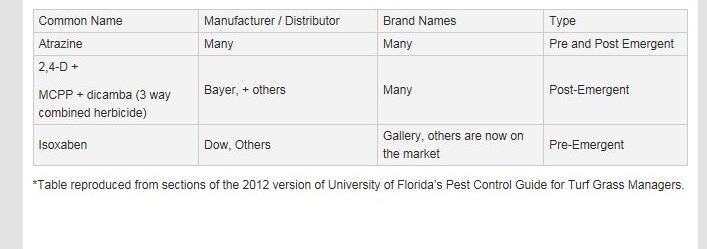
The active ingredients mentioned above are present in a variety of ‘trade name’ products* available from your local garden center, farm supply or co-op. Be sure to read label instructions carefully and contact your local extension office for any assistance. I hope all the northwest Florida lawn managers prevent burweed this fall so that lawns will be burweed free next spring.
Happy Gardening!

by Matthew Orwat | Oct 6, 2015
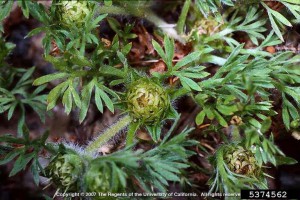
Lawn Burweed, Soliva Sessilis, Closeup – Image Credit: Joseph M. DiTomaso, University of California – Davis, Bugwood.org, Create Commons License
On this bright and sunny early fall morning I was thinking about all of the great gardening opportunities the cooler fall weather is bringing us in the Florida Panhandle. However, my thoughts drifted to the annoyances that the gardeners find when trying to enjoy their lawn or garden.
On the top of my list is stepping into a patch of burweed, which is in the sunflower family and is also known as spurweed. The leaves are opposite along the stem and sometimes resemble parsley. The main ways which burweed can irk the casual gardener are sticking to socks, sneaking in with the dog, or littering flower beds with its nuisance. It can also hide in the house and reappear when shoes are removed. This causes pain in both the foot and the ear.
Aside from herbicides, maintaining a healthy vigorous lawn will prevent weeds from taking over. If you lawn is reasonably healthy and only a few instances of this weed exist, try to mechanically remove them and encourage the lawn to outgrow them.
If cultural methods aren’t sufficient, science has given us several options to control this irksome pest. A widely used pre-emergence product for burweed control is isoxaben, which is sold under the brand name of Gallery as well as others. It prevents the weed from emerging from the ground when it germinates and can be used on St. augustine, centipede, bahia and zoysia lawns, as well as ornamental shrub beds. In northwest Florida, this herbicide needs to be applied in October for best results.
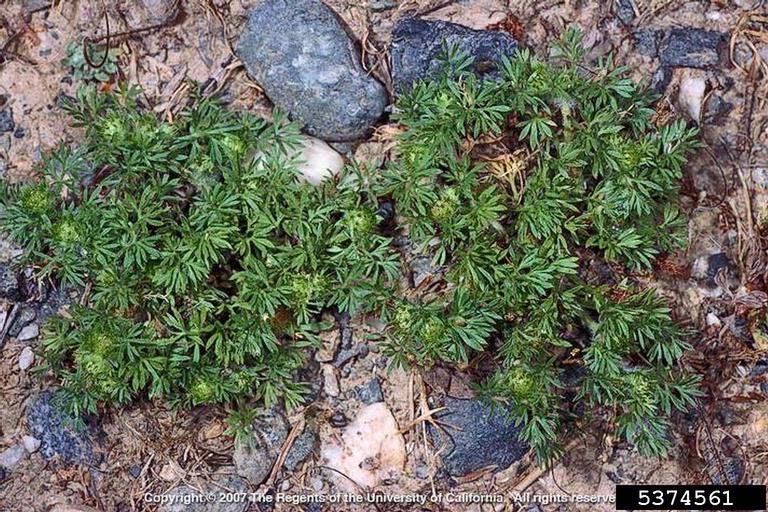
Burweed, Soliva Sessilis. – Image Credit: Joseph M. DiTomaso, University of California – Davis, Bugwood.org. Creative Commons License
Herbicides which contain the active ingredients dicamba, 2,4-D or atrazine are good at controlling burweed as a post emergence control when applied from December through early March. Be careful to use reduced rates on centipede and St. augustine lawns, and never use more than the labeled rate. Later applications have less effect on burweed because as it matures it is harder to control. Additionally the burs, once present on the lawn, are hard to remove. As the daytime temperatures get a few degrees over 80, some of these herbicides may cause lawn damage so immediate application is advised. Try to keep the spray residue outside of the root zone of desirable plants to avoid injury and always follow label directions. Be aware that burweed reproduces by seed, so mowing it down will only increase the problem by burying the seed for fall germination.
The active ingredients mentioned above are present in a variety of ‘trade name’ products* available from your local garden center, farm supply or CO-OP. I hope all the northwest Florida lawns prevent burweed so that the spring lawns will be burweed free. Happy Gardening!
| Common Name |
Manufacturer / Distributor |
Brand Names |
Type |
| Atrazine |
Many |
Many |
Pre and Post Emergent |
| 2,4-D +
MCPP + dicamba (3 way combined herbicide) |
Bayer, + others |
Many |
Post-Emergent |
| Isoxaben |
Dow, Others |
Gallery, others are now on the market |
Pre-Emergent |
*Table reproduced from sections of the 2012 version of University of Florida’s Pest Control Guide for Turf Grass Managers.





